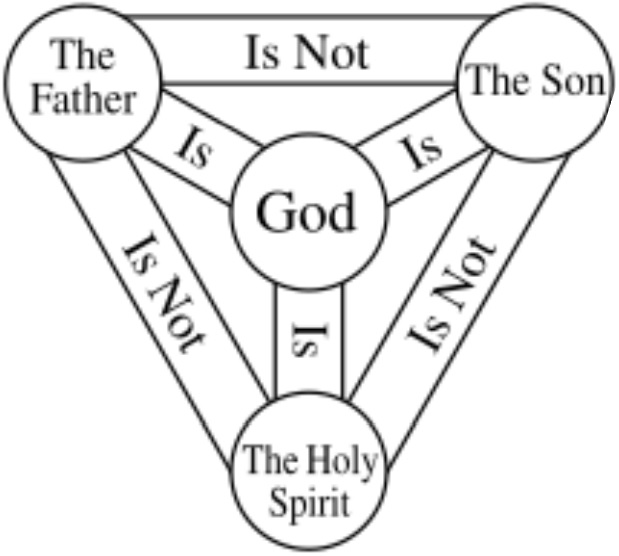by Rev. Antony W. Ball

That’s what this diagram is called, according to the famous ‘Wikipedia’ – I’ve long been familiar with it without knowing its name – and, the encyclopedia tells us: “The Shield is not generally intended to be a schematic diagram of the structure of God, but it presents a series of statements about the correlation between the persons of the Trinity.” I agree – and can’t you almost hear the authors of Wikipedia breathing a collective sigh of relief at my agreement?
God is, of course, at the centre. Radiating out from Him are the three ‘Persons’ of the Trinity – through Whom He makes Himself known to us. God began His self-revelation with just one man, Abram (meaning ‘High Father’ – later God re-named him Abraham, meaning ‘Father of a multitude’), who lived around four thousand years ago in ‘Ur of the Chaldeans’, a Sumerian city in the Euphrates valley, near the head of the Persian Gulf. Following God’s instructions, Abram moved with his family (which included his wife Sarai, his father Terah and his nephew Lot) to Haran, a trading centre in what we now know as northern Syria. When God changed Abram’s name to Abraham and changed his wife’s name from Sarai to Sarah, He promised Abraham that he and Sarah would give birth to a son, Isaac, whose descendants would inherit the ‘Promised Land’ of Canaan, described as ‘a land flowing with milk and honey’ – which, eventually, they did. Over later centuries, Abraham’s descendants became known as ‘Jews’ and they did have a vastly better awareness of the nature of God than did most other tribes in the land, many of which still worshipped idols made of wood or stone. So The Father is how God came to be known to the people of the Old Testament – from Abraham, Isaac and the patriarchs, Moses and the prophets, right up until the birth of Jesus.
The Son in the Shield of Trinity is, of course, Jesus Himself. He not only regarded God as His own, personal Father but also encouraged us (in the Lord’s Prayer, for example) to do the same. For us as Christians, Jesus extended immeasurably our awareness and understanding of the nature of God by His miraculous birth, His sinless life, His abundant teaching, His self-sacrificial death, His miraculous resurrection and ascension. During the fifty days of His resurrection life, His disciples must have grown almost accustomed to Him ‘appearing’ to them from time to time, but He was still limited by place and time – while He was with them He could not be anywhere else. At Pentecost, something else miraculous happened – the coming of the Holy Spirit.
The Holy Spirit enabled the power of God, symbolized by the noise of the wind and the flames of fire, to be freed from those limitations of space and time so that Jesus could ‘fill the universe’ (as Paul puts it in his letter to the Ephesian Church) for the rest of eternity – to be with us whenever we turn to Him, wherever we happen to be.
That awareness of the nature of God is not perfect, of course – we cannot possibly ‘understand’ God with only our feeble human minds – but the Trinity idea does help just a little.
We celebrate Trinity Sunday on June 4th.